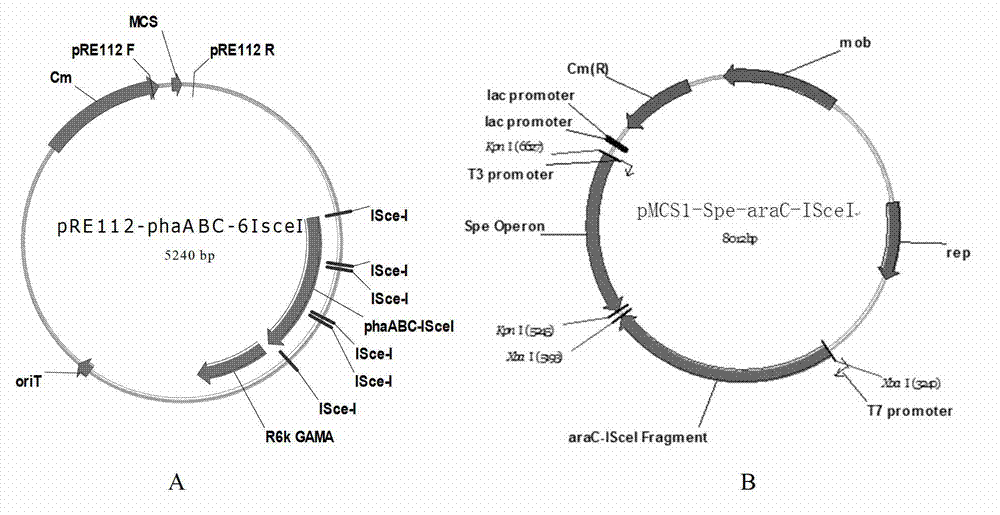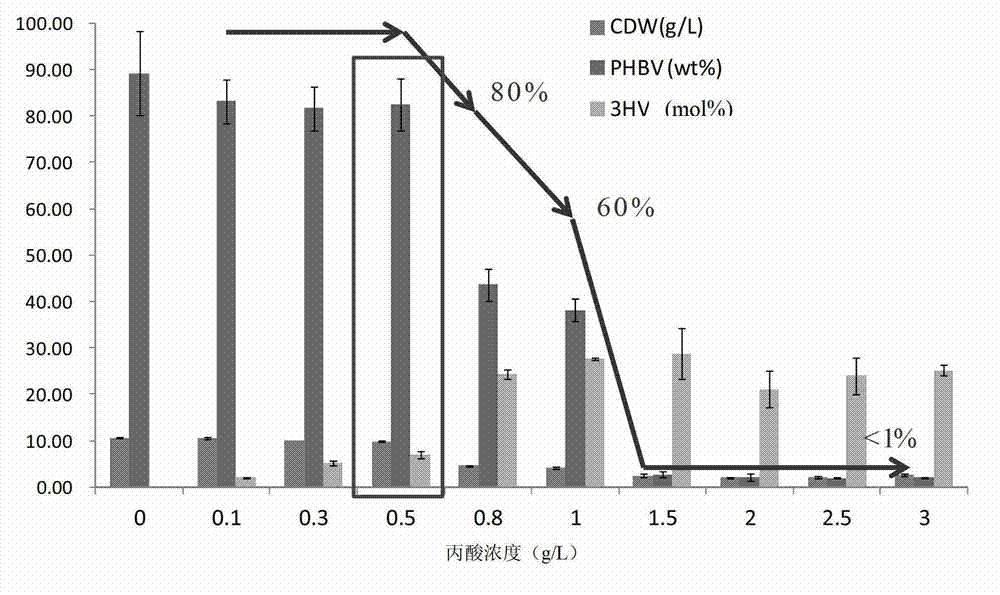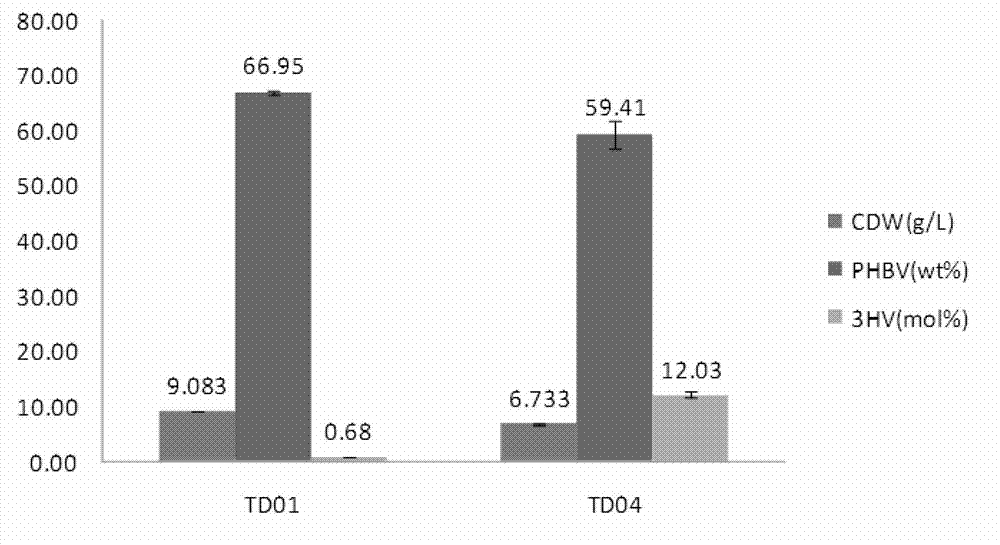Construction and application of polygene knockout strain of Halomonas sp. TD01
A Halomonas, gene technology, applied in the construction and application of Halomonas multi-gene knockout strains, can solve the problems of poor material performance, low propionic acid conversion rate, and low ratio
- Summary
- Abstract
- Description
- Claims
- Application Information
AI Technical Summary
Problems solved by technology
Method used
Image
Examples
Embodiment 1
[0078] Example 1. Construction of Halomonas sp.TD04 strain and its functional identification (knockout of 2-methylcitrate synthase (PrpC))
[0079]After experiments, it was found that the suicide plasmid (pRE112-phaABC-6IsceI, a plasmid that cannot replicate in Halomonas) mediated genomic DNA knockout technology using homologous recombination was suitable for Halomonas sp.TD01 Efficient knockout method. The advantage is that the genomic DNA can be completely deleted and mutated without the possibility of reverse mutation, and at the same time, no resistance markers will be introduced into the genomic DNA, which is beneficial to the subsequent molecular biology work. By optimizing the negative screening method, that is, by additionally expressing the homing endonuclease I-SceI, cutting at the 6 I-SceI sites of the genome of the insertion mutant produces a double-stranded DNA gap, which can strongly induce the second homologous recombination Compared with the traditional high s...
Embodiment 2
[0167] Example 2. Construction of Halomonas sp.TD08 strain and its functional identification (knockout of 3 PhaZ and PrpC)
[0168] 1. Construction of Halomonas sp.TD08 strain
[0169] 1. Construction of Halomonas sp.TD02
[0170] 1) Construction of the knockout vector pRE112-phaABC-6IsceI-B
[0171] Using the genomic DNA of Halomonas sp.TD01 as a template, primers Z1424-H1-F (ATCGTCTAGATTGAGCTGCTCTTACCTAGAGAG) and Z1424-H1-R ( TGACCAGGCATGCCCAGCTC GGTCAATACCCCCAATTCCGC) was amplified to obtain a 500bp PCR product (Z1424-H1 fragment, the upstream homology arm of the gene encoding PHA degrading enzyme 1); use Z1424-H2-F ( GCGGAATTGGGGTATTGACC GAGCTGGGCATGCCTGGTCA) and Z1424H2-R (ATCGGAGCTCTCTGAGCGGCTGGCGTTAAG) were amplified to obtain a 497bp product (Z1424-H2 fragment, the downstream homology arm of the gene encoding PHA degrading enzyme 1).
[0172] Using the Z1424-H1 fragment and the Z1424-H2 fragment as templates, and using Z1424-H1-F and Z1424-H2-R as primers, PCR was ...
PUM
| Property | Measurement | Unit |
|---|---|---|
| Dry cell weight | aaaaa | aaaaa |
Abstract
Description
Claims
Application Information
 Login to View More
Login to View More - R&D
- Intellectual Property
- Life Sciences
- Materials
- Tech Scout
- Unparalleled Data Quality
- Higher Quality Content
- 60% Fewer Hallucinations
Browse by: Latest US Patents, China's latest patents, Technical Efficacy Thesaurus, Application Domain, Technology Topic, Popular Technical Reports.
© 2025 PatSnap. All rights reserved.Legal|Privacy policy|Modern Slavery Act Transparency Statement|Sitemap|About US| Contact US: help@patsnap.com



